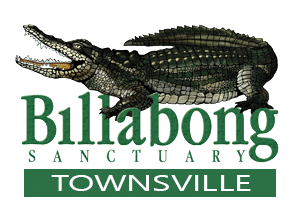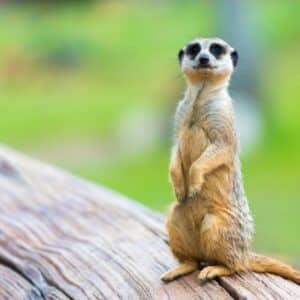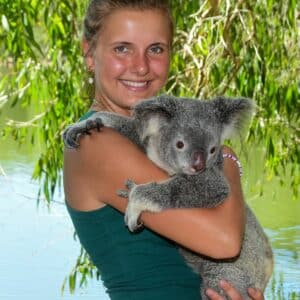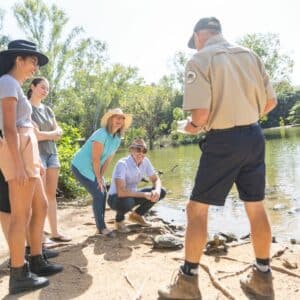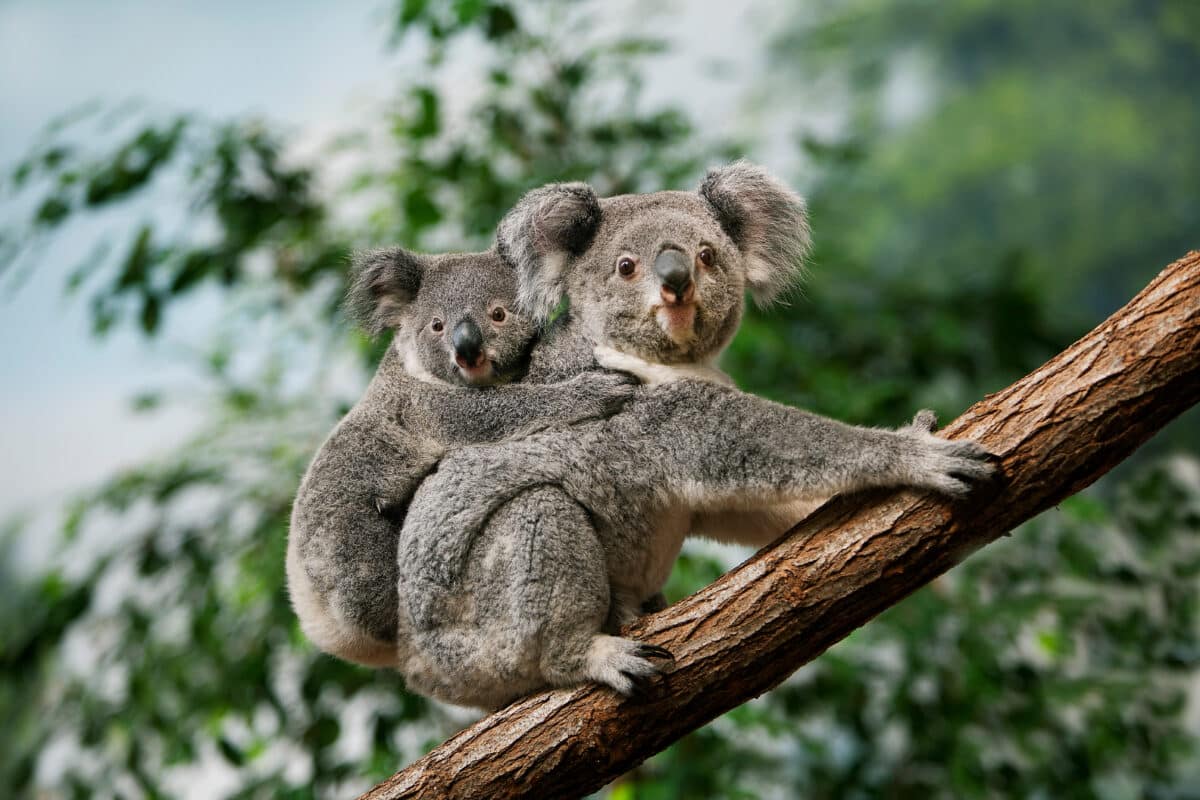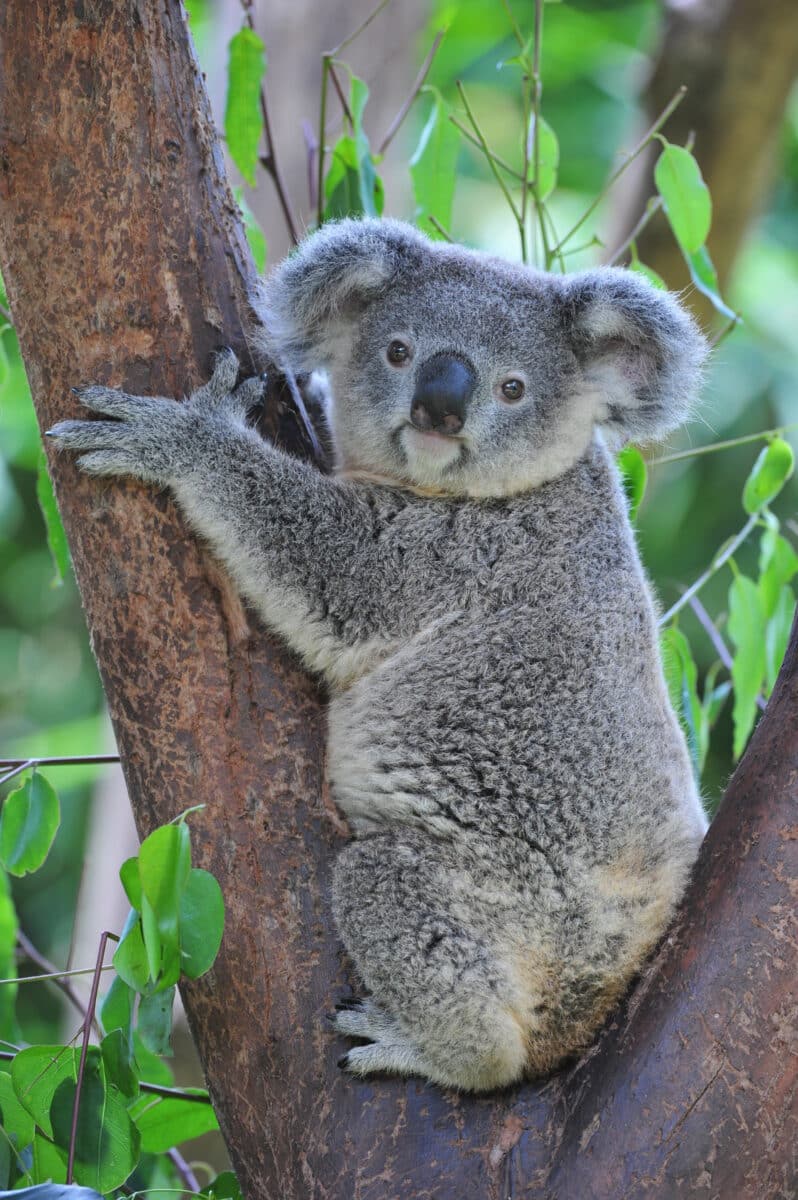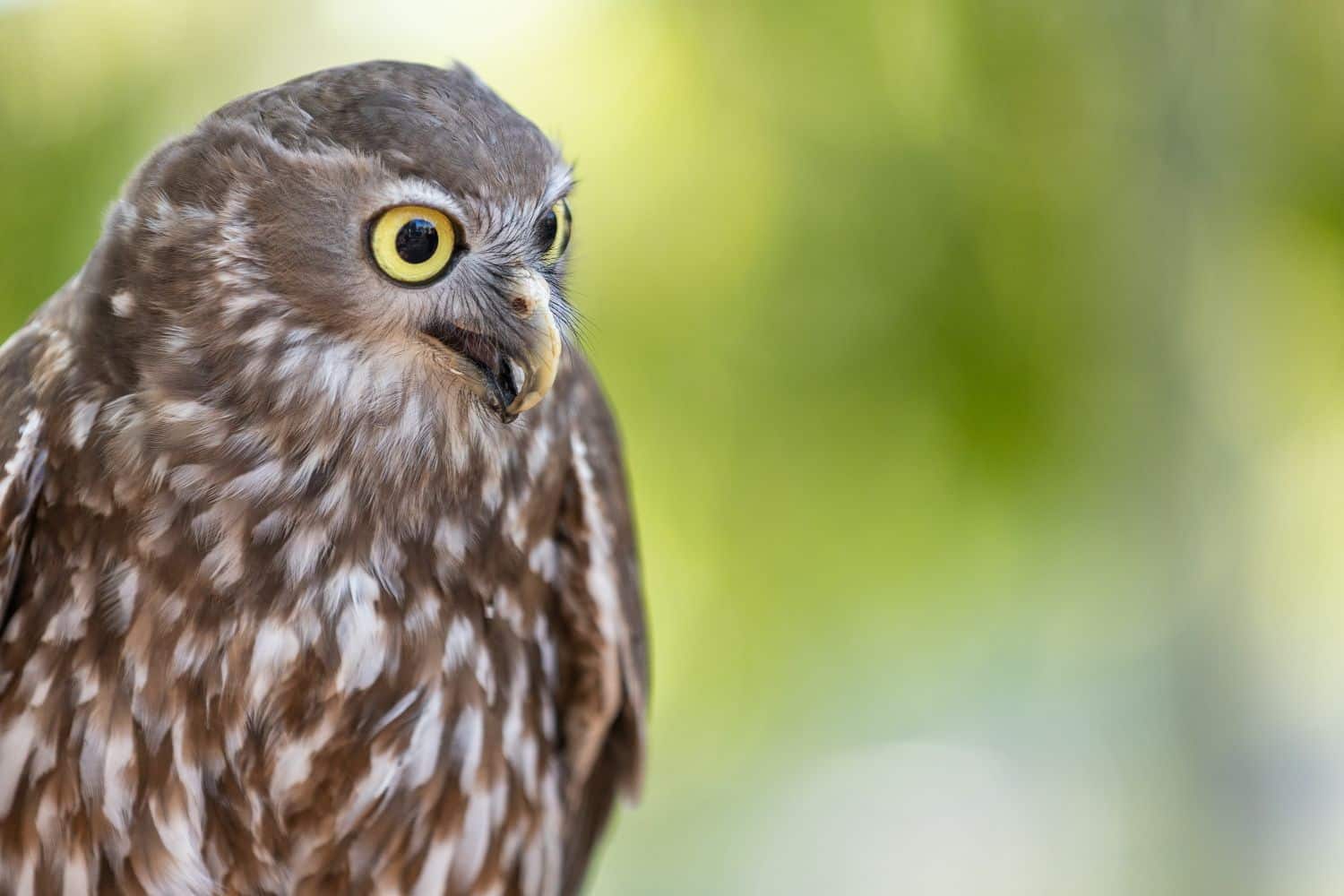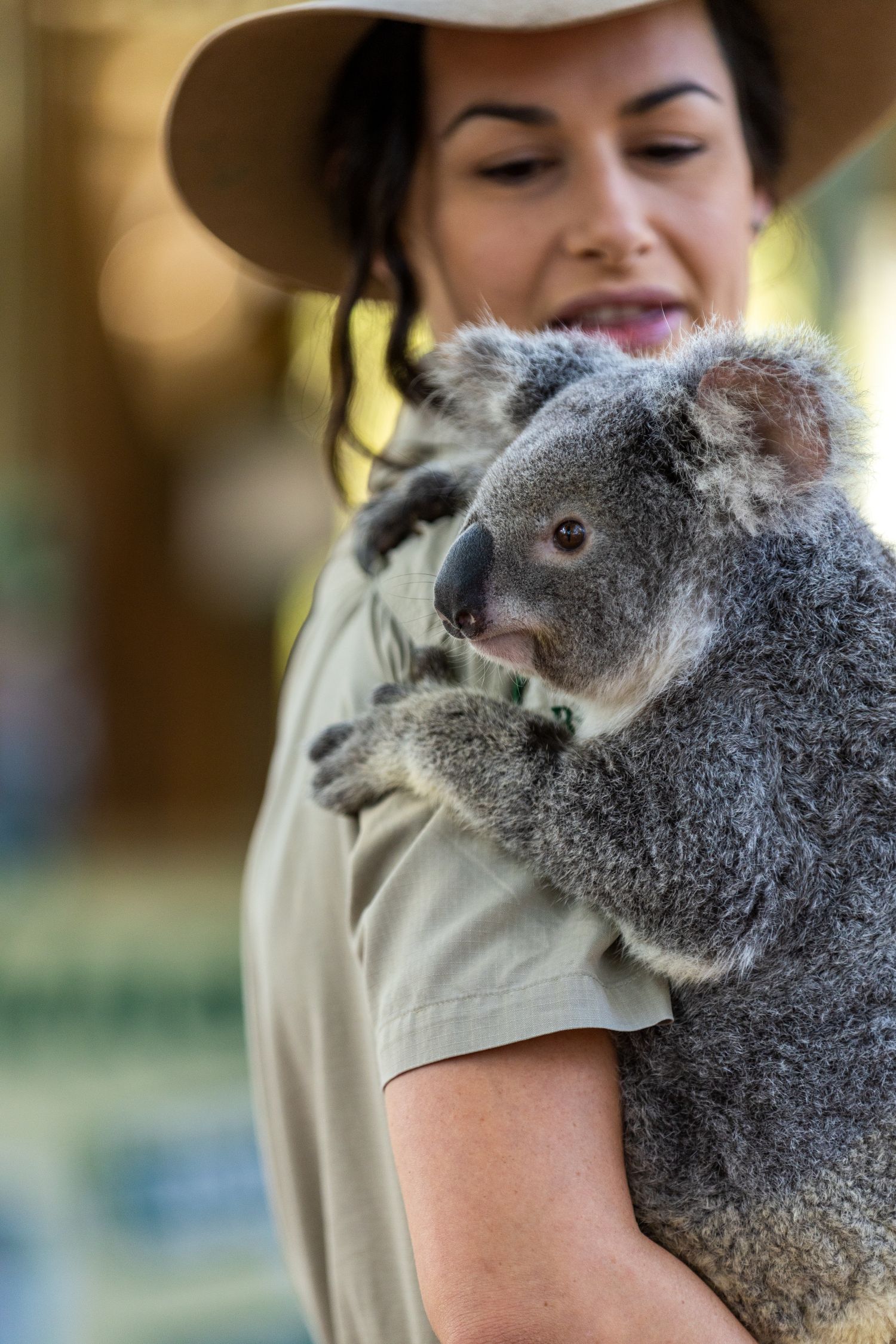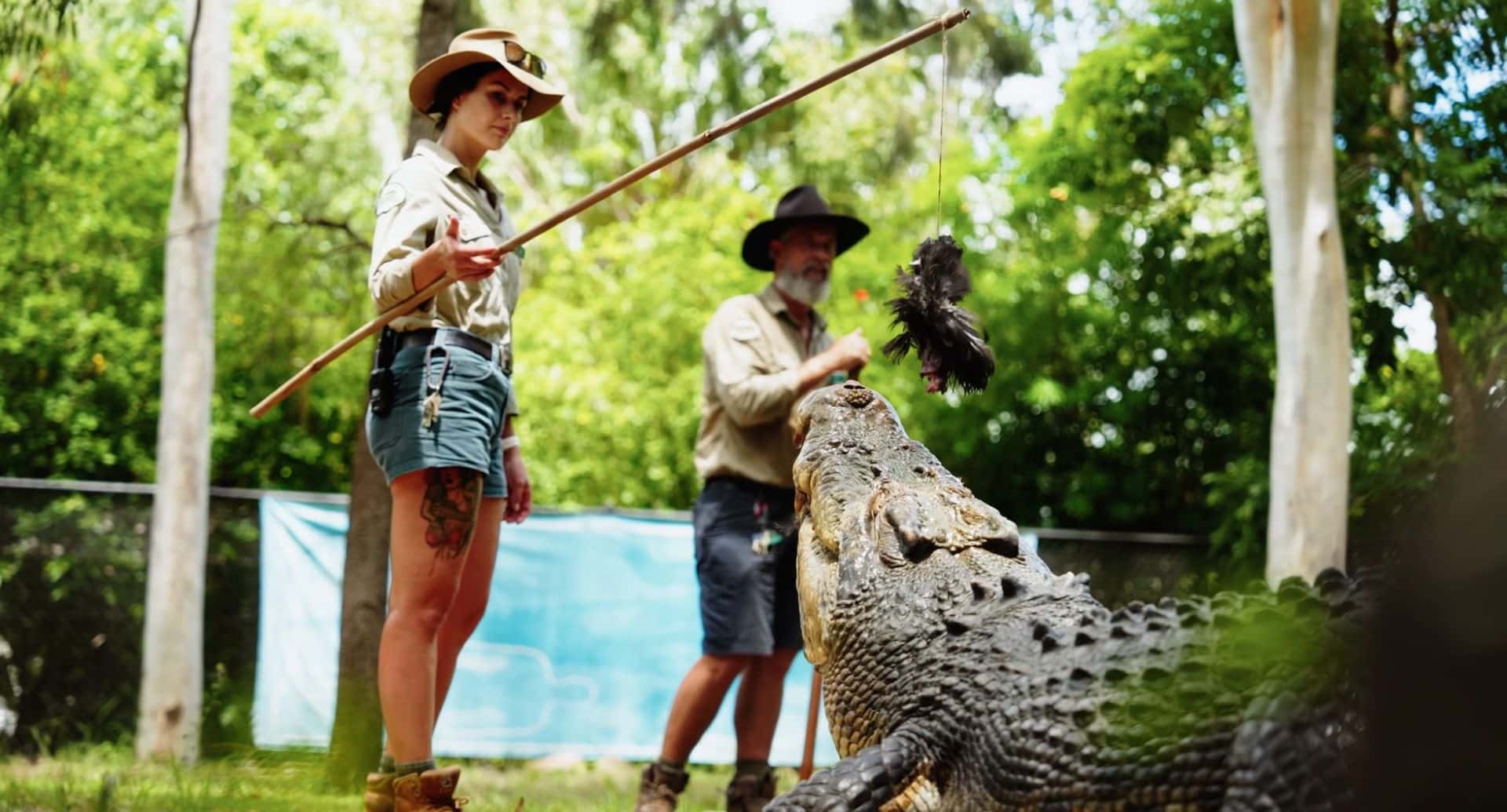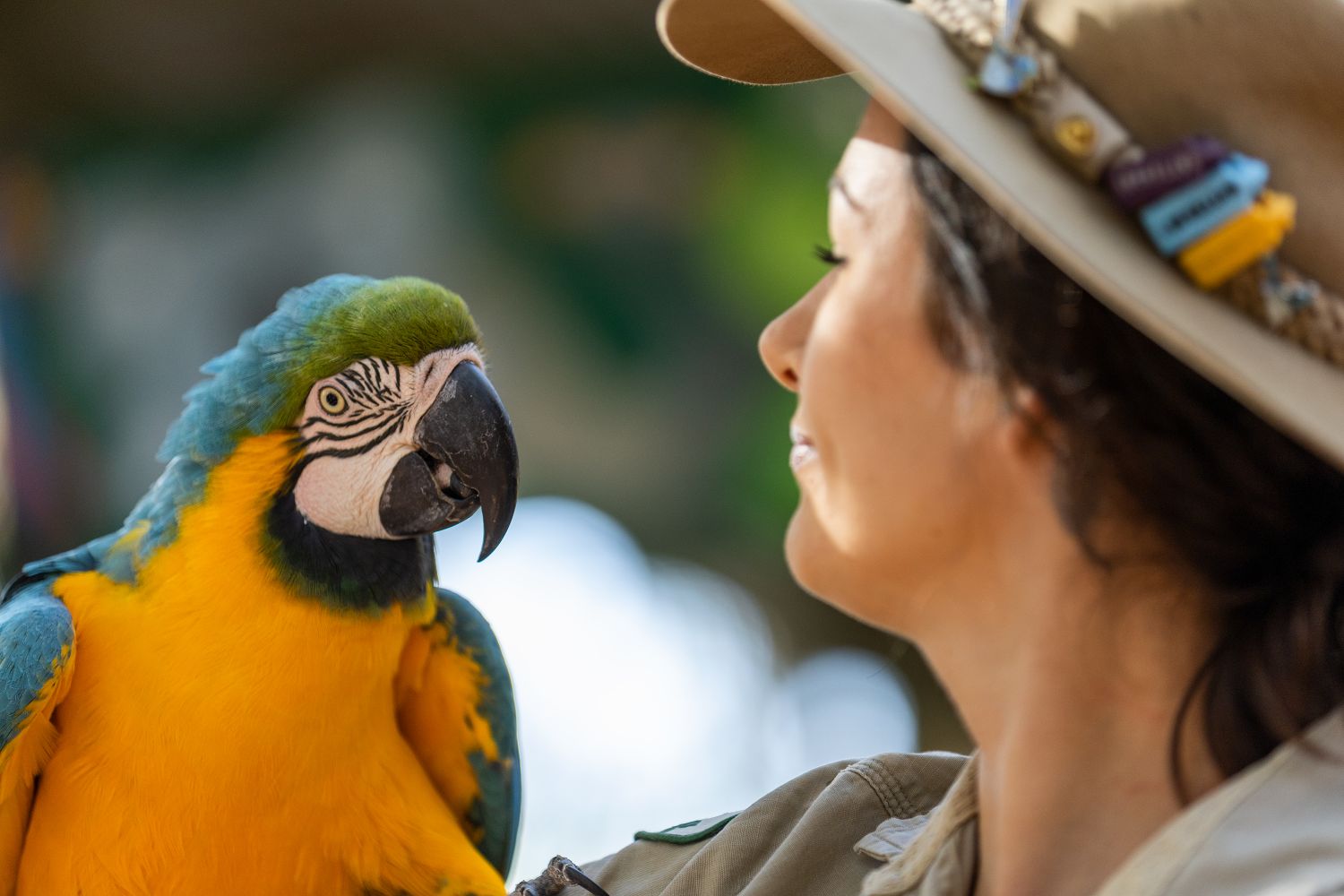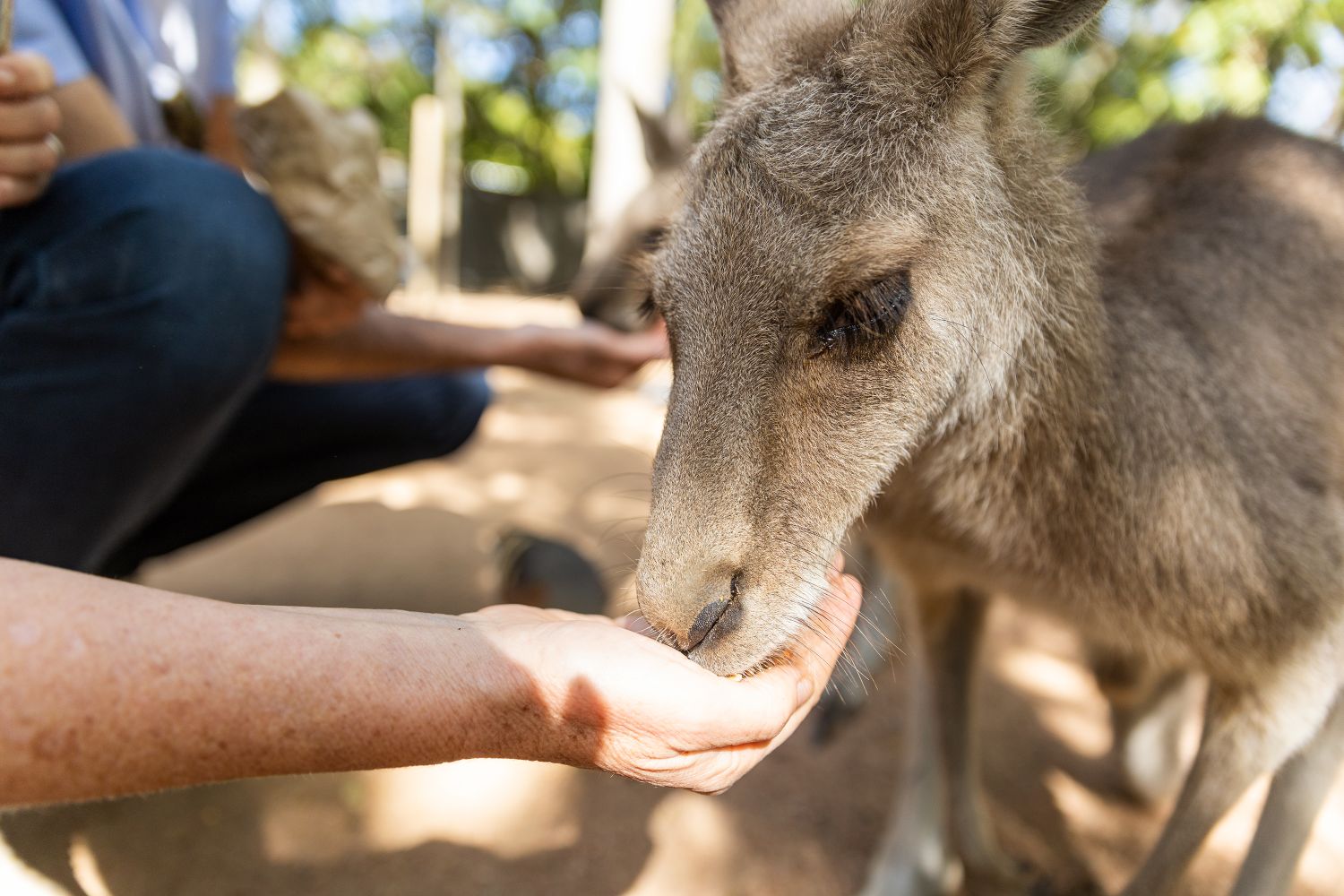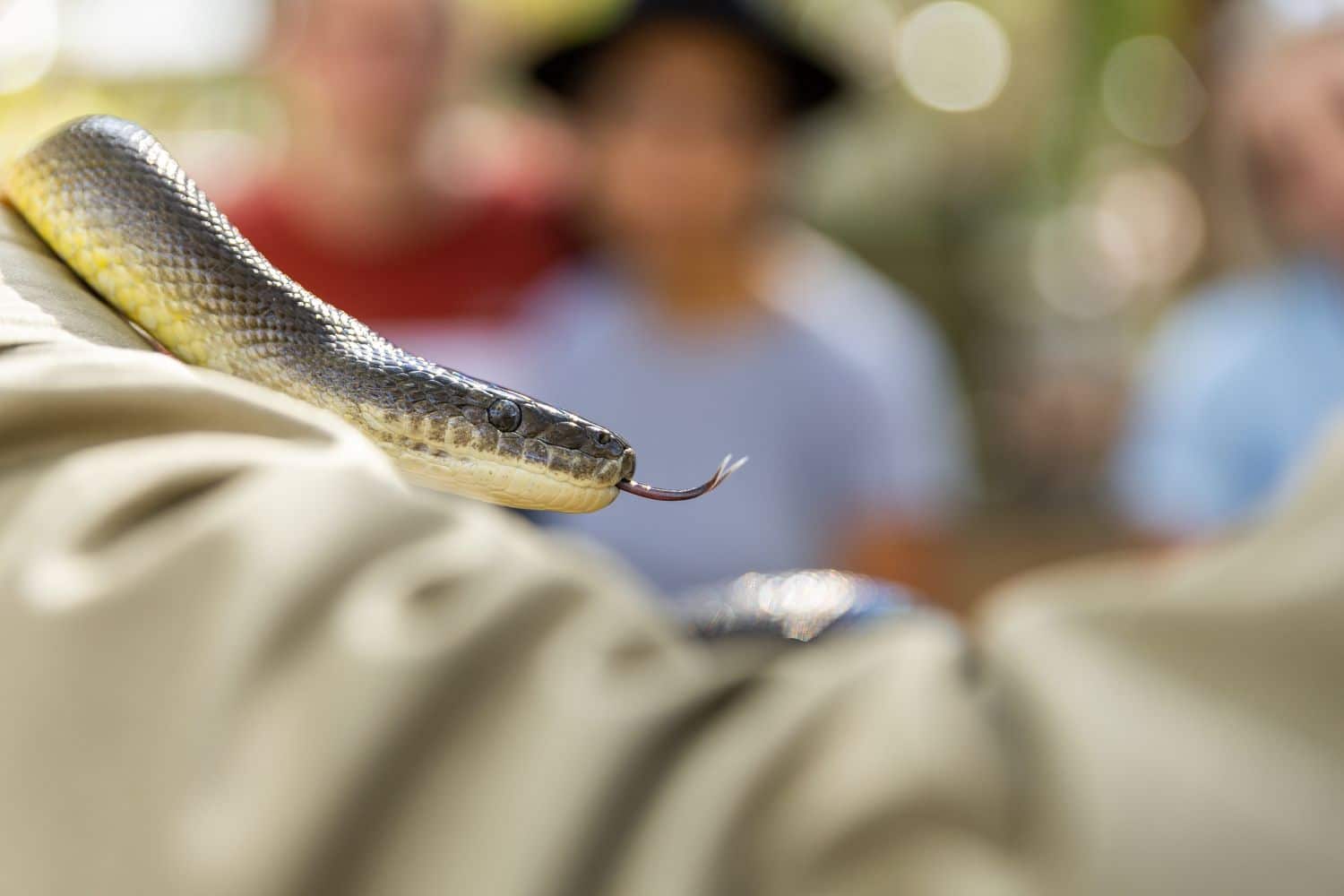Teddy-bear cute, with its big fluffy ears and smudge of a nose, it is high on the list of attractions that visitors to Australia ‘must see’.
Billabong Sanctuary has a healthy, growing population of koalas, including several born and raised right here in the park. There is usually a young joey to charm visitors with its shoe-button eyes, soft fur and slow-motion antics. A highlight of your visit will surely be that long-anticipated moment when you finally have a chance to cuddle a koala. One of our Rangers will snap your photo for a perfect souvenir of your visit to Queensland.
WHAT’S IN A NAME?
The word ‘koala’ derives from an Aboriginal word meaning ‘no drink’. Because koalas so seldom venture down onto the ground, it was thought they have no need to drink water.
While they do get most of their water requirement from leaves, we always keep fresh water in our koala enclosures.
The genus name Phascolarctos is from the Greek words phaskolos meaning ‘leather pouch’ and arctos meaning ‘bear’. The species name cinereus is from the Latin word cinerus meaning ‘ashes’ and refers to the koala’s grey fur. Thus, the scientific name means: ‘grey-coloured pouched bear’.
Of course, koalas aren’t bears at all; in Australia they are most closely related to the Wombat.
WHAT DO THEY LOOK LIKE?
Koalas are large, tree-dwelling mammals with soft grey fur on the back and white fur on the front. They have small eyes, a very large nose, and large ears rimmed with white fur. They have a tail, but it is so tiny it is hardly noticeable.
DISTRIBUTION AND REGIONAL DIFFERENCES
Koalas are found only in eucalyptus forests in the eastern states of Australia, from the tropics of Queensland south to New South Wales and Victoria, with limited, patchy distribution in South Australia.
Southern koalas are much larger than those found in the north, with thicker, woolly fur. Male koalas in Queensland average 6.5kg (14.3 lb) while those in Victoria may weigh twice as much. Female koalas average 5.1kg in weight (11.2 lb) in Queensland, and about 7.9kg (17.4 lb) in Victoria.
WHAT DOES IT EAT?
The diet of the koala consists almost exclusively of young leaves from gum trees (Eucalyptus species).
While there are over 700 species of eucalyptus trees found in Australia, Koalas will eat only about 70 kinds, and have strong preferences for just a few; namely, river red gum and forest red gum in the north, and grey gum, manna gum, swamp gum and blue gum in the southeast. They may eat small amounts of other eucalypts such as ironbark, and occasionally some non-eucalypts such as certain wattle, box and tea-trees.
ADAPTATIONS FOR THIS SPECIAL DIET
Eucalyptus leaves have very low energy content, but very high fibre content. They also contain strong-smelling oils (the typical Vicks Vapo-Rub smell) as well as phenolic compounds and some cyanide precursors. The koala is one of the few mammals adapted to eat such unpalatable fare.
That big nose gives the koala a highly developed sense of smell. This is necessary to differentiate among different species of gum leaves, so the koala can avoid those which are more toxic.
The teeth of the koala are also specialised for their diet of leaves. The sharp front incisors nip the leaves from the branch. The molars are designed to cut and shear the leaves. A gap between incisors and molars allows the tongue more room to move the mass of leaves about as the koala chews them. The jaw has very powerful muscles, used to grind the leaves to a fine pulp before they are swallowed.
The koala has proportionately the longest caecum of any animal! This blind pouch, between the small and large intestine, contains millions of special digestive bacteria. As the leaves travel slowly through this long digestive tract, they are fermented by these microorganisms, releasing the nutrients for the animal’s use.
A joey is not born with these microbes. Before it is weaned from the pouch, the mother starts to produce specially softened faeces, called ‘pap’. The joey eats some of this pap, and in so doing, inoculates its own gut with the special digestive bacteria.
Watching a koala at Billabong Sanctuary snoozing among the branches, you may think that this is a lazy animal.
In fact, because of the low nutritional value of eucalyptus leaves, koalas have a very low rate of metabolism, and a very low energy requirement. They spend about 18 to 20 hours a day resting and sleeping in the fork of a tree. After sunset they will become active and forage for tender young leaves.
ADAPTATIONS FOR AN ARBOREAL LIFE
The body of the koala is lean and muscular, and it has an excellent sense of balance. Long thigh muscles provide strength for climbing. Long sharp claws on both front and back feet and rough, granulated pads on the palms and soles help grip tree trunks and branches.
The first two toes of the front paws work in opposition to the other three toes. This gives the koala a strong grip on branches as it clambers through the tree canopy.
Koalas have a thickened pad of dense fur on the rump, with a thick layer of cartilage over the end of their spine. This provides a comfortable cushion while they rest in the fork of a tree for so many hours.
Koalas can get all the water they need from leaves and from water on the surface of the leaves. This makes it unnecessary to climb down from their tree to go in search of a supply of free-standing water.
When they do have to leave the shelter of the tree, they are vulnerable to predators such as dingoes, foxes and feral cats.
REPRODUCTION AND LIFE CYCLE
The mating season begins in September (springtime in Australia). Males will bellow loudly, and commence scent marking to establish territory. They have a large scent gland on their chest, which they rub up and down on the trunk of a tree, leaving a distinctive eucalyptus oil odour.
Breeding occurs in late spring and early summer. Thirty-five days later, the single young (rarely twins) is born.
Koalas are marsupials (pouched mammals) but unlike most other marsupials such as kangaroos and wallabies, their pouch faces downwards. (In this they resemble wombats, their closest living relative). The tiny newborn embryo, pink and hairless, makes its way from the birth canal into the mother’s pouch. At this time it weighs less than half a gram (.02 oz) and is only 19mm (.75 in) long – about the size of a jelly bean! It clamps its mouth over one of the nipples in the pouch and remains there for the next seven months. The nipple expands inside the baby’s mouth, and strong muscles at the opening of the pouch contract to prevent the little joey falling out.
At 22 weeks of age, the joey is covered in fine brown fur. It opens its eyes for the first time and will begin to poke its head out of the pouch. This is also the time when the mother starts to produce pap.
At 24 weeks of age the joey is fully furred and sprouts its first teeth. About three weeks later it will emerge from the pouch and begin to eat very young tender leaves as well as mother’s milk. It will sleep clinging to its mother’s belly, and ride on her back when she moves about.
By the time it is a year old, the joey is fully independent of the mother.
Young females remain near their mother for another year. Although they are mature by the end of their second year, most will not breed until they are three or four years of age. Not every female in a wild population will breed every year, and some produce young only every two or three years, so that one female may produce at most five or six offspring during a 12-year lifespan.
Males disperse when independent and will roam around for a year or two before establishing a territory and mating. A male koala living in an undisturbed habitat may live up to 10 years. Those living near humans are at much greater risk from cars, dogs and cats, and may only survive a year or two. Koalas in captivity may live up to 15 years or more.
STATUS IN THE WILD
Before white settlement, koalas were hunted by Aboriginal Australians for food. They were also regarded as totems by some tribes. Widespread clearing of their forest habitat did not occur, and there was probably no threat to their survival as a species.
In the early part of the 20th century millions of koalas were slaughtered for their fur by European settlers.
They are now fully protected from hunting but clearing of large tracts of eucalyptus forest for farming and urban development threatens their future survival.
The Australian Koala Foundation estimates that there are between 40,000 and 80,000 koalas remaining in the wild in Australia. Many of these individuals live in isolated pockets of forest, which makes them more vulnerable to extinction from fires, drought, disease and feral animals. Koalas which are under stress from overcrowding are also more susceptible to infections from bacteria of the genus Chlamydia. These can cause eye disease and infections of the urinary and reproductive tracts.
The Foundation considers it necessary for governments to pass effective legislation to prevent further loss of koala habitat and ensure their continued survival.
KOALAS AT BILLABONG SANCTUARY
Spread among several enclosures in the park, we have a healthy breeding population of koalas here at Billabong Sanctuary.
Some of these koalas have been born here, and some have been brought in from other wildlife parks.
It is important to keep track of our ‘family trees’ and to bring in koalas from widely different locations, so that we can maximize the genetic diversity of our growing population.
We plan to continue with our successful breeding programme, so that there will always be healthy koalas living here to entertain and enlighten visitors to the park.
Billabong Sanctuary is the only place you can hold a koala in Townsville.
